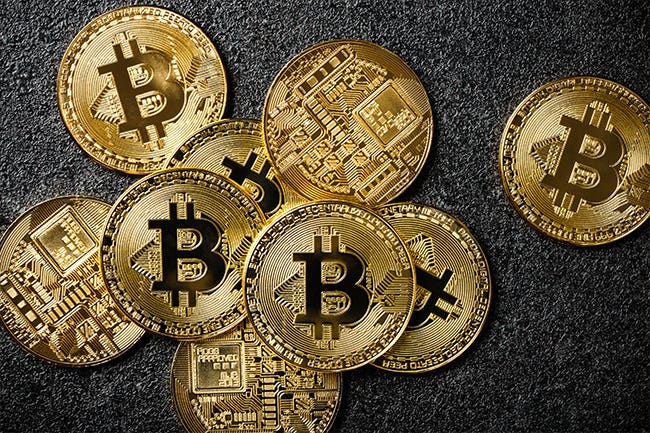Latest news about Bitcoin and all cryptocurrencies. Your daily crypto news habit.

The music streaming giant Spotify recently made headlines when it decided to go public through directly listing its shares on the New York Stock Exchange. Direct listing means that Spotify won’t participate in the traditional initial public offering process, thereby dramatically reducing the role that investment banks like Goldman Sachs have in its listing.
One of the benefits of listing shares directly is that Spotify will save tens of millions of dollars in fees typically paid out to investment banks. Additionally, it allows retail investors to participate in the initial stages of Spotify’s listing without institutional investors getting the first cut of the pie. In many ways, Spotify’s direct listing is similar to what blockchain startups are doing through initial coin offerings (ICOs). Through ICOs, blockchain companies bypass third-party underwriters and allow all investors to buy coins from the get-go.
ICO bounty programs allow companies to leverage their platform tokens to maximize their marketing efforts.
However, the ICO landscape is extremely competitive. It is not uncommon for dozens of ICOs to be happening at the same time. One way that startups can get a leg up on their competitors is through running a successful ICO bounty program.
What is an ICO Bounty Program?
The concept of a bounty program comes from the online gaming world, where a bounty is a reward paid out to an individual or group for accomplishing certain objectives. In the ICO sphere, bounty programs are used by blockchain startups to accomplish a wide range of tasks at the cost of the project’s token.
Rather than spend precious–and often times scarce–capital on expensive press releases, banner ad campaigns, and Google Adwords, ICO teams can incentivize the completion of marketing tasks through bounty programs. Thus, rather than hire out a marketing firm, projects can set aside a tiny portion of their tokens as rewards for their bounty program. Then, through the use of smart contracts, they can list the specific tasks that need to be completed.
Bounties are essentially tokens of appreciation for helping the blockchain project progress.
Bounties cut down on costs for startups while simultaneously incorporating members of the blockchain community. Startups end up paying less for bounty-incentivized tasks like bug fixes, social media posts, and marketing materials while individual users–called bounty hunters–get the satisfaction of helping a blockchain startup and receive equity in return. Bounty programs are essential tools in establishing a loyal support base and reaching the maximum number of potential investors.
The Different Types of Bounty Programs
There are two main types of ICO bounty programs:
1) Pre-ICO bounties
These bounties are marketing focused. The goal is to generate social media and internet support for the ICO before it begins. They are meant to spread awareness of the coin and the platform. Examples of bounties include:
- YouTube video creation and editing
- Content creation, including blog post, website article, and newsletter generation
- White paper translation
- Infographic creation
- Bitcointalk signatures
- Social media awareness, including Facebook, Twitter, and Instagram posts
2) Post-ICO bounties
These bounties are focused on improving the blockchain’s project or service. They allow the development team to improve the platform by receiving direct feedback from investors and outside developers. Examples include:
- Platform bug fixes
- Product improvements and suggestions
- Web translation
- Community management
Aspiring blockchain startups should utilize at least one of the bounty programs described above. Of particular importance is the pre-ICO bounty program, especially for a lower profile, cash-stretched projects. Pre-ICO programs are a great way to spread platform awareness while saving money, allowing the team to devote precious capital to software development and implementation.
Below is a list of some popular bounties arranged from largest to smallest average payout:
- Bug fixes
- YouTube video creation bounties
- Marketing material creation: articles, promotional pieces, content creation, etc.
- Airdrops
- Social media bounties: Facebook posts, likes, shares; Twitter posts, re-tweets, likes; Instagram posts, etc.
Costs Associated with Bounty Programs
Blockchain startups can hire bounty campaign managers to oversee the program from start to finish. Prices vary, but it typically costs between $3,000-$6,000 USD. They can also utilize bounty campaign networks to streamline the bounty management process.
It is recommended that companies set aside between 0.5–1.0% of their tokens for bounties, though it varies based upon the project’s specific needs.
Examples of Successful ICOs Who Used Bounty Programs
Status — This bounty program rewards users for submitting potential solutions to bugs in the software. Status announced in November 2017 that $1 million of their $100 million token salewould go to bug bounties.
Bancor — Bancor has had several bounty campaigns, including ones for content creationand bug fixes. The ICO raised $153 million, which at the time was a record. The token sale only lasted for three hours.
ICONOMI — The Slovenian based company raised over $10.5 million, which was a sizeable amount back in late 2016. The team devoted 2% of the token supply to across several bounty campaigns. A majority of the bounties were marketing focused.
How to Run a Successful ICO Bounty Program was originally published in Hacker Noon on Medium, where people are continuing the conversation by highlighting and responding to this story.
Disclaimer
The views and opinions expressed in this article are solely those of the authors and do not reflect the views of Bitcoin Insider. Every investment and trading move involves risk - this is especially true for cryptocurrencies given their volatility. We strongly advise our readers to conduct their own research when making a decision.


